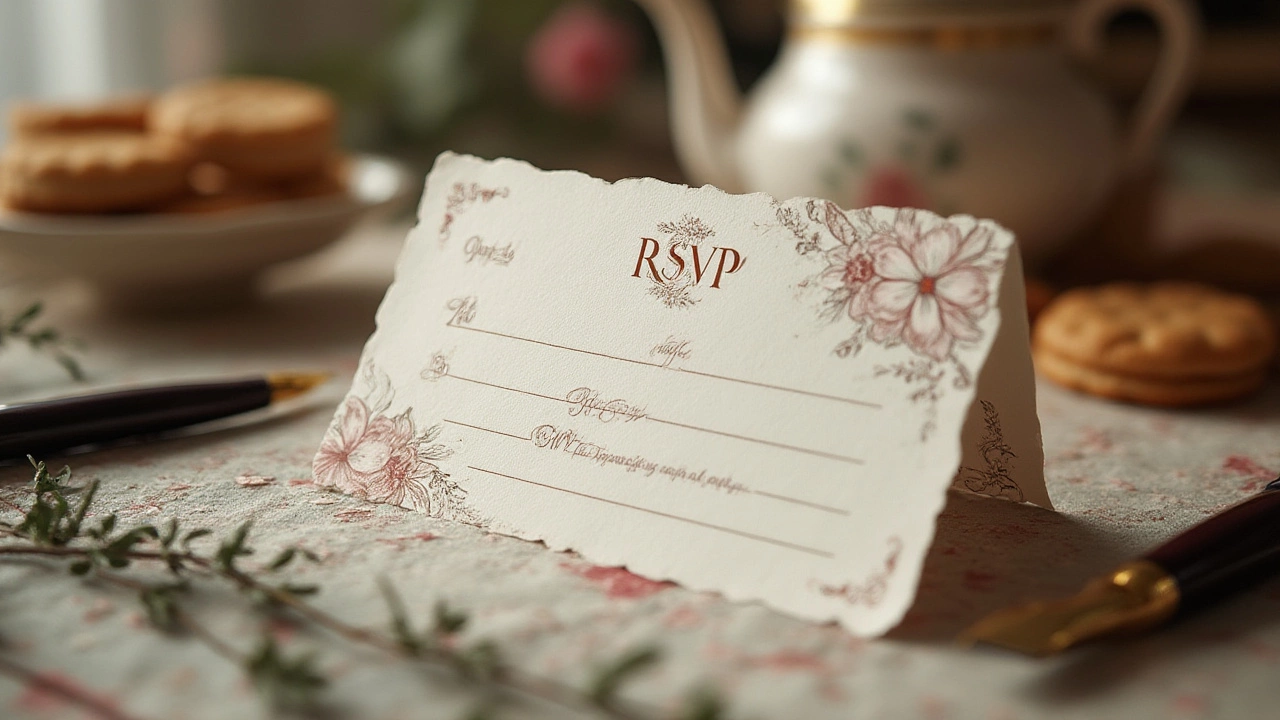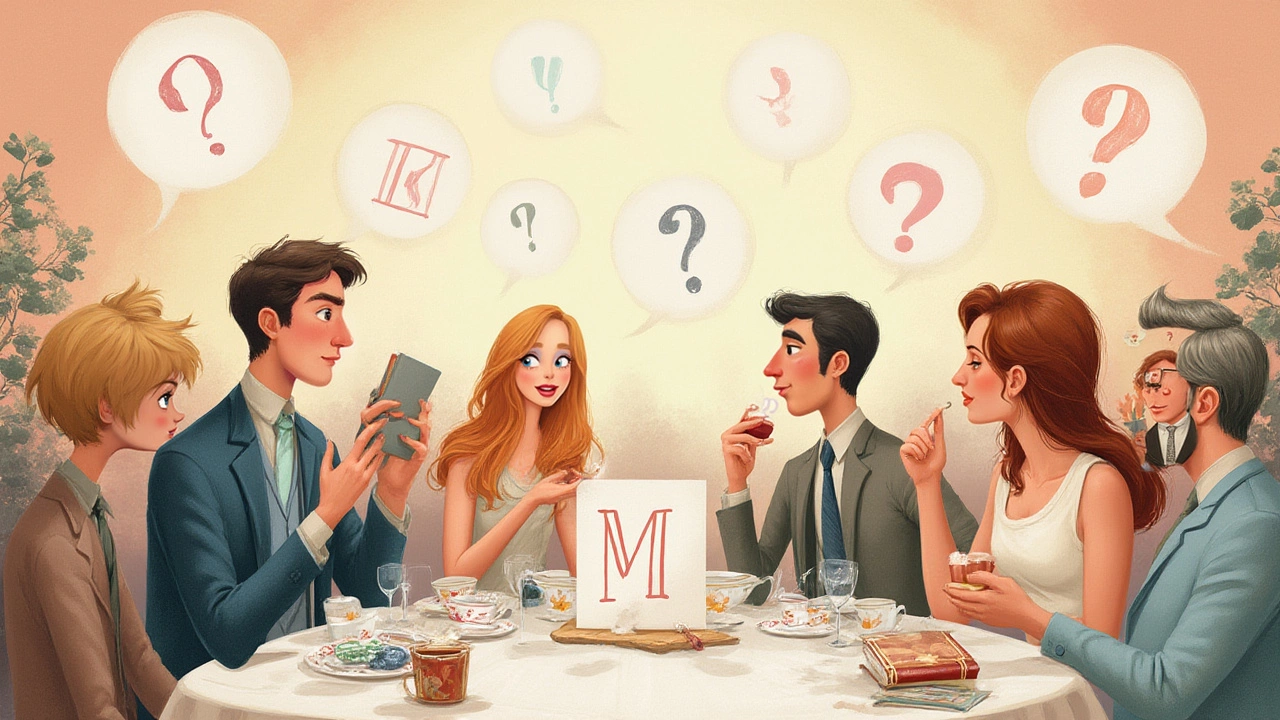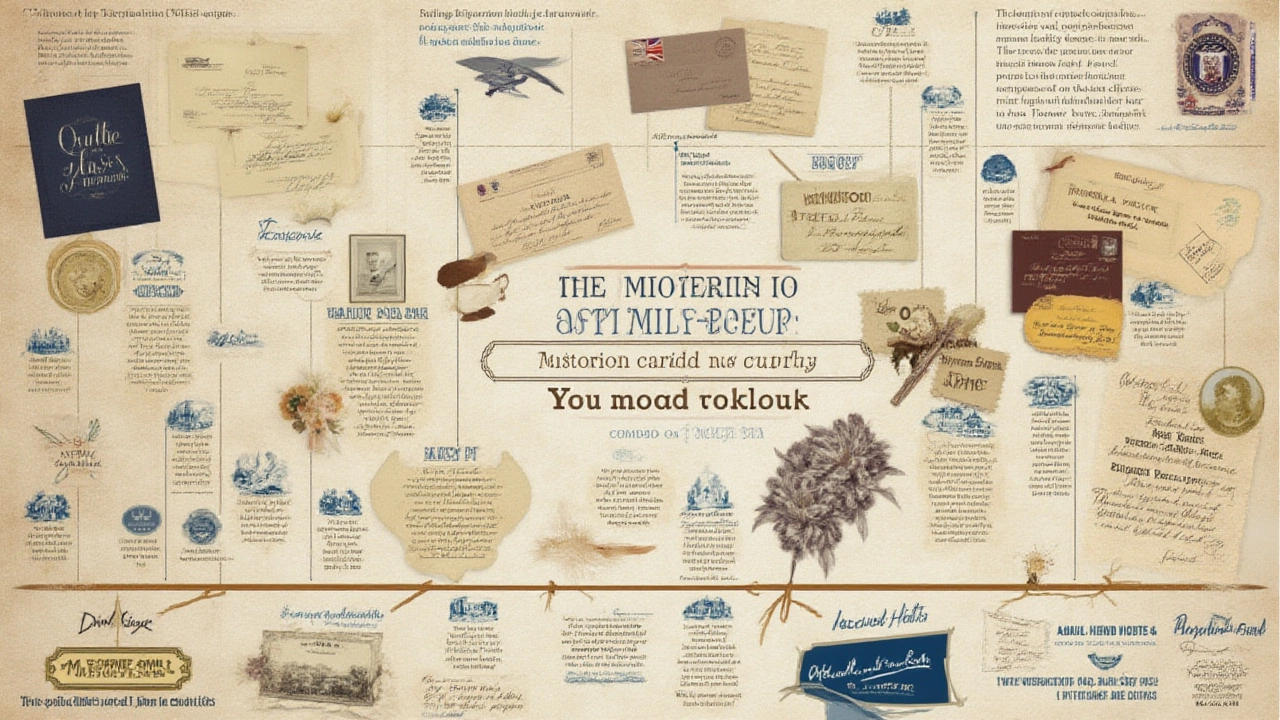What Does the M Mean on an RSVP Card? Decoding Wedding Invitation Etiquette
 Jul, 11 2025
Jul, 11 2025
Picture this: you finally get a wedding invitation in the mail. It's padded with pretty paper, fonts that make your handwriting look like chicken scratch, and a little RSVP card that asks for your reply by a certain date. You see a single letter at the beginning of the response line: an 'M.' Suddenly, you're stuck. What are you supposed to do with this random letter? Is it a secret code? A leftover from ancient times? You might be surprised by the answer, and it all ties back to some old-school etiquette that’s never quite gone away.
Why Is There an 'M' on RSVP Cards?
Let’s get right to it: the 'M' stands for the first letter in Mr., Mrs., Miss, or Ms.—basically, it’s an old-fashioned prompt for you to write your title, then your name. Traditional etiquette says you’d fill it out with “Mr. and Mrs. Elliott Featherstone” (if it were for my husband and me) or, say, "Ms. Serena Featherstone" if you were RSVPing on your own. It's the etiquette world's way of making the card look formal and polite, echoing the historic traditions found in wedding culture for decades, possibly even over a century.
This little letter has roots way back in a time when proper address was a bigger deal than the flavor of your wedding cake. Back when handwritten letters were the norm, hosts wanted to know exactly who was coming, including titles. It helped avoid awkwardness—like sending a table card reading "Miss Serena" when you’re married (and have two kids, like me). The 'M' is a formality—a silent nod to a more buttoned-up past that's sticking with us, even as the modern world updates almost everything else about weddings.
Here’s a fun tidbit: a study by the WeddingWire team in 2023 reported that around 43% of couples still use RSVP cards with an 'M' line, even though digital RSVPs are on the rise. And did you know that etiquette books as early as the 1920s included instructions for the 'M'? It’s pretty fascinating how something so small has stayed a part of wedding stationery just because it signals tradition.
But it isn’t only about appearances. Correctly filling out that line is helpful for your hosts. Let’s say your handwriting is fine, but halfway between “Cameron Jones” and “Cynthia Jones,” a host might not know who’ll actually be showing up. And if your name is something unique or gender-neutral—like Finley or Cassia, my own kids' names—the title tells the hosts exactly who to expect without awkward emails back and forth.
Sometimes, the 'M' creates confusion—all those GIFs online of people going, “What am I supposed to write after this?” So if you’re stumped, know you’re not alone. Couples get text messages each year from guests worrying they're doing it wrong. But honestly, as long as you make it clear who’s coming, you’re doing just fine. Some guests just cross out the 'M' and write their names. Others complete it with titles, and a few ignore it altogether. These days, unless the couple is very traditional, no one's really keeping score. But if you want to impress your host, the title is a safe bet—think of it as a polite throwback, sort of like bringing a bottle of wine when you visit someone’s home.

How to Fill Out the 'M' Line: Step-by-Step Tips and Etiquette
If you’re still thinking, “But what do I actually do with this letter?” let’s clear it up with some simple steps and practical pointers. Trust me, you won’t need a degree in etiquette—or an ancient wedding manual—to get it right.
- Start with the 'M' by completing it with your proper title: Mr., Mrs., Ms., or Miss. That’s all the prompt is asking. For example: “Mrs. Serena Featherstone” or “Mr. Elliott Featherstone.”
- If you’re attending as a couple, include both names: “Mr. and Mrs. Elliott Featherstone.” For same-sex couples or if you want something different, use the honorifics or titles that feel right for you both, like “Ms. Serena Featherstone and Ms. Jamie Rivers.”
- If you’re bringing kids (and they’re invited), include them under your names or on the next line. For example: “Mr. and Mrs. Featherstone, Finley and Cassia.”
- Guests sometimes worry about formality—if you’re close to the couple, you can dial back the tradition and just put “Serena and Elliott Featherstone,” but if you're not sure, stick with titles.
- If you dislike using a title for gender reasons or for comfort, simply cross off the 'M' and write your name as you want. Modern etiquette leans toward respect for personal preference.
Still feeling nervous? You’re definitely not the only one. In a survey of 1,500 guests by Brides magazine last year, nearly a quarter admitted to googling 'What does the M mean on RSVP cards?' at least once.
One quirky thing: sometimes people leave the 'M' blank and write only : “—Serena Featherstone.” It’s not a crime, but it might look odd if everyone else uses their formal titles. Stick with the format if you want to blend in with the crowd.
If you’re getting the RSVP card as part of a wedding invitation set, pay attention to any other clues. Is the event super formal? Are there classic fonts and flourishes? That’s your hint that the couple cares about etiquette and appearance—titles are probably preferred. But if the invite is casual with bold colors and playful graphics, don’t overthink it. The couple is probably just fine with a friendly note.
One pitfall to avoid: never just write your first name, especially if the bride or groom knows lots of people with your name. I learned this at my cousin’s wedding, where there were four “Cassia’s” on the guest list, and the bride needed detective skills to sort out who’d accepted the invitation. Clear, full names (with that letter completed) save everyone a headache—especially whoever's making the seating chart.
If you need a quick visual guide, this little table might help clear things up on standard ways to respond:
| RSVP Card 'M' Line | How to Fill It In | Sample Entry |
|---|---|---|
| M | Single person (female, prefers Ms.) | Ms. Serena Featherstone |
| M | Married couple | Mr. and Mrs. Elliott Featherstone |
| M | Couple with kids | Mr. and Mrs. Featherstone, Finley and Cassia |
| M | Same-sex couple | Ms. Serena Featherstone and Ms. Jamie Rivers |
| M | Skipping titles | Serena and Elliott Featherstone |
If you’re ever truly unsure, you can always reach out to the couple or their planner. They’ll be grateful for your thoughtfulness—sometimes a little clarity goes a long way, especially when the RSVP pile starts to grow.

Why RSVP Matters and How Small Details Make a Big Difference
So why does any of this fuss about a letter matter at all? It’s more important than you might think. For the couple getting married, the RSVPs are how they know how much food to order, what seating chart to create, and how to label your place card so there’s no confusion. And yes, those “plus one” questions hinge on this, too. Every year, couples and planners describe the RSVP process as a surprising source of stress—mostly because of responses that are late, unclear, or incomplete.
Clear, prompt RSVPs help everyone, especially when venues operate with tight guest counts. Caterers and venues need numbers weeks in advance, and planners have to juggle every last detail. According to a 2022 report by The Knot, over 60% of wedding hosts have to follow up with at least a handful of guests who leave their RSVP cards incomplete or ambiguous—sometimes because of that mysterious 'M.' Filling out your RSVP card neatly, with your full name, isn’t just polite—it’s genuinely helpful for everyone involved.
Another thing that comes up a lot: if you don’t send back the RSVP (or if you skip names), your host has to play detective, and no one wants that. My friend Rachel once showed me a box stuffed with RSVP cards bearing only semi-legible scribbles—every one of them meant an extra phone call or message. And sometimes, people write clever jokes instead of their formal names, which is cute until someone’s trying to alphabetize everyone for table assignments.
The number of guests you include on the card (for instance, writing your children’s names) tells the hosts exactly how many seats they need. Wedding costs add up fast, and each guest is typically accounted for by name. Most caterers charge per head, so getting an accurate count means the couple isn't paying for unused seats or, worse, scrambling to add a last-minute chair because someone brought an unconfirmed guest.
If you’re organizing a wedding yourself, here are a few tips I’ve learned along the way to make your own RSVP process run smoothly:
- Make your cards clear, with instructions printed just below the RSVP line, such as: “Please fill in your names as you wish them to appear on your place cards.”
- For friends who might not know formal etiquette, add a tiny printed example, like below the line: “M____ (Mr. or Mrs. Your Name).”
- Provide an RSVP-by date that’s a few weeks earlier than you really need responses back. People always run late.
- Consider offering digital RSVP options alongside your traditional cards. Some folks are more comfortable responding by website, and you’ll get answers faster.
- For complicated guest lists, a numbering system on the back of each RSVP card—linked to your list—lets you match stray cards to who sent them, even if the names are missing or hard to read.
Fun fact: a study from WeddingPro showed that couples who offered both paper and digital RSVPs got replies twice as fast on average than those who only used printed cards. So blending traditions doesn’t just include everyone—it gets the job done.
On a personal note, watching my daughter Cassia puzzle through the meaning of the 'M' the first time she saw an old invitation (she thought it stood for "Maybe"—as in, maybe attending?) gave me a good laugh. She had a point, though—most guests just want to be sure they’re doing it right. And once you know, it’s one less wedding mystery to stress about.
So the next time you get that wedding invite with its fancy paper, beautiful calligraphy, and a single mysterious letter, you’ll know exactly what to do. The 'M' isn’t a trick; it’s just an old courtesy—a simple prompt to add your name so your hosts can plan their big day without any extra guessing games. Fill it in confidently; after all, wedding chaos is inevitable, but an RSVP card with your full name? That’s one tradition that actually makes life easier for everyone.